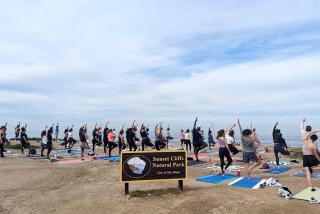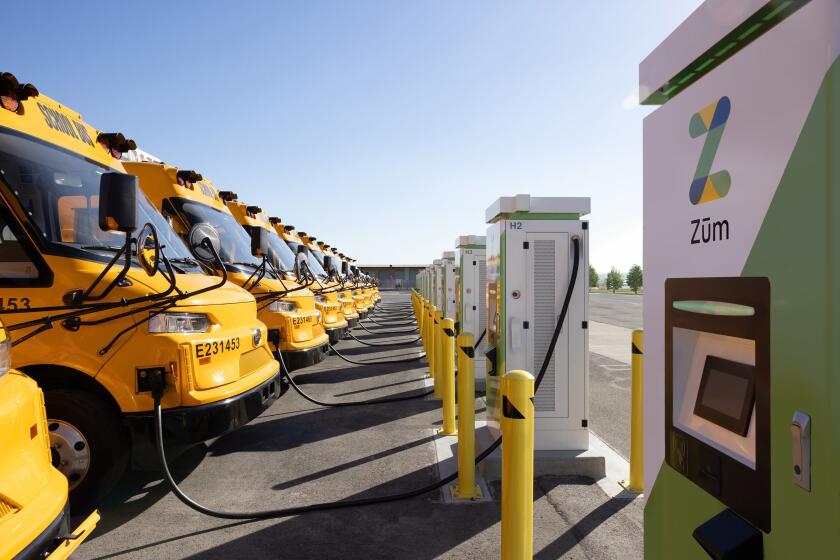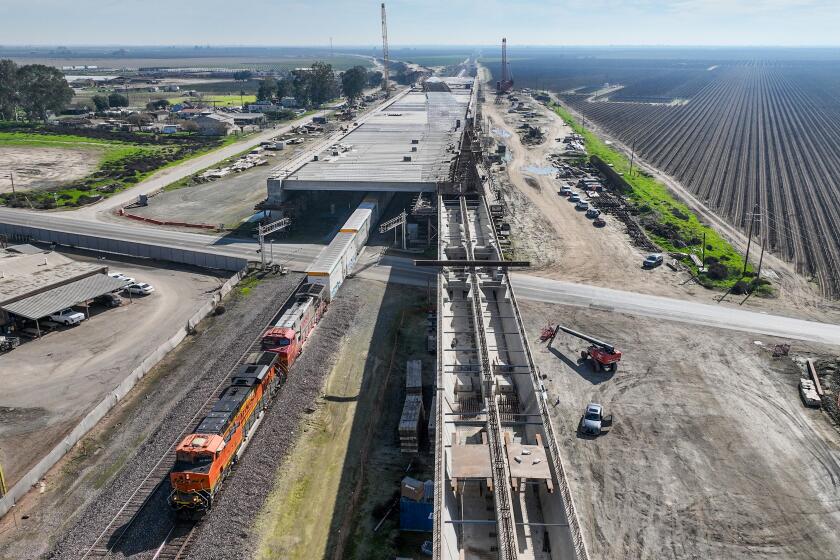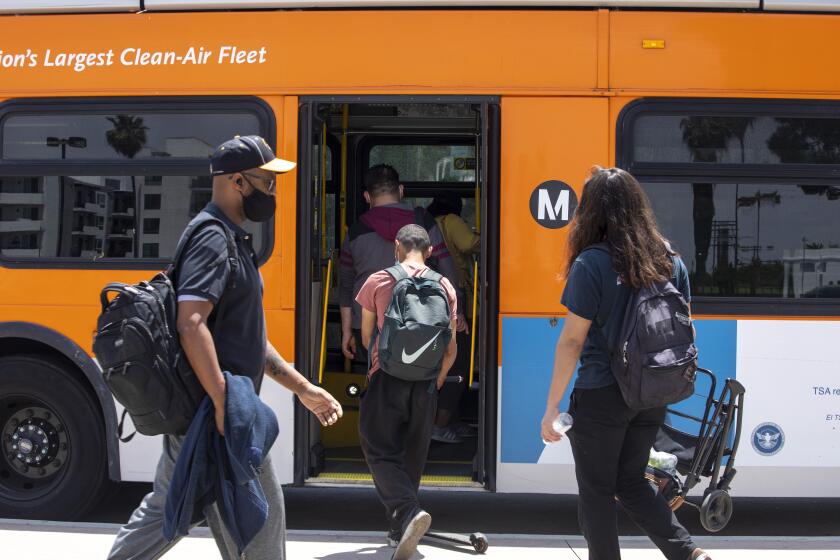L.A. Scoffs at Suggested Traffic Cures : Congestion: Angry city officials say remedies offered by Valley leaders represent old approaches.
Los Angeles city officials have reacted angrily to traffic-relief suggestions produced by San Fernando Valley leaders at a recent brainstorming session, contending that most already have been studied and that other, more effective measures are ready for implementation.
“We’ve been very active here in looking for congestion relief, and I get sort of annoyed when I hear some of these comments,” said General Manager S. Edwin Rowe of the city Department of Transportation.
“This city has been the leader in traffic mobility since the 1984 Olympics,” said Bill Chandler, Mayor Tom Bradley’s press deputy. “Our high-technology solutions are studied and copied worldwide.”
Such reactions haven’t deterred Nicholas Patsaouras, a Southern California Rapid Transit District board member who organized the April 7 event, which he dubbed the “Valley Transportation Summit.”
“These people are looking at things in the same old way, and that’s why we have such terrible problems,” he said. “We’ve got to put some pressure on them.”
The daylong meeting--attended by 32 elected officials, homeowner and civic group leaders and transportation officials--was aimed at finding short-term relief for the Valley’s traffic woes, said Patsaouras, a Tarzana resident who was appointed to the RTD board by Supervisor Mike Antonovich.
Antonovich, whose district includes most of the Valley, is another who recently joined the chorus of voices needing city transportation officials.
On his motion, county supervisors last week called on city officials to revive proposals for reversible lanes on Victory, Ventura, Van Nuys and Sepulveda boulevards and on Vanowen Street. The same proposal also won support at the April 7 summit.
A reversible lane is one that is open only to inbound motorist during morning rush hours and outbound vehicles in the evening rush hour.
The City Council and Mayor Bradley should “get off the dime and implement some of the congestion improvements which have been studied,” Antonovich said. “They have not done a good enough job.”
In addition to reverse-flow lanes, two other major proposals emerged at the April 7 meeting:
Using electric buses, powered by overhead wires, on Ventura Boulevard to replace diesel-powered RTD buses.
Minibus or van lines in Studio City, West Hills, Chatsworth, Porter Ranch and Sylmar. The buses would bring passengers to shoping areas and funnel riders into the regional bus system.
Rowe said, however, that reversible lanes have been studied exhaustively for the Valley and elsewhere in recent years. But only Sepulveda Boulevard from Ventura Boulevard to West Los Angeles appears to be a good candidate that would relieve Valley congestion, he said.
Streets that are well suited to reverse-flow lanes have a preponderance of traffic in only one direction during rush hours and also have a minimum of cars seeking to make left turns into local businesses, Rowe said.
Sepulveda through the Santa Monica Mountains meets those criteria but Victory, Van Nuys and Vanowen “fail on both counts,” he said.
During rush hour, Victory, Vanowen and Van Nuys carry large numbers of local motorists headed for a neighborhood store or a doctor’s office, he said, and those drivers would want to cross a reversible lane to reach their destinations. If prohibited from doing so, they would make three right turns on local streets to get to their desired destination, he said.
Also, because may jobs have moved to the west and north sectors of the Valley and beyond, “no longer is there such a preponderance of traffic in one direction,” Rowe said.
The general manager also said he has not had time to study the five proposed minibus routes, although he said that similar systems operated by his department in Westwood, the Fairfax District and downtown “have been effective at moving people.”
Rowe said such lines obtain about 35% of their operating expenses from fare-box receipts, with the remainder coming from the city’s share of money raised by the extra half-cent sales tax that Los Angeles County voters approved in 1980.
The $38 million the city gets each year from the sales tax is already fully committed to the three existing minibus lines, to construction of the Metro Rail subsidy and to the city’s Commuter Express bus system, which serves the Valley, Rowe said.
The proposed electric buses on Ventura Boulevard also drew an unenthusiastic response from Rowe, who said that “many other cities are taking them out, so I don’t know if that is the technology of the future.”
Patsaouras disagreed, saying, “This is definitely not old-style technology,” and adding that manufacturers recently developed power lines that can be attached to light posts, reducing visual blight.
Patsaouras said he would bring the electric bus plan to the Los Angeles County Transportation Commission, which oversees local spending on buses and rail lines, at its May 23 meeting.
Rowe predicted that Valley motorists would gain noticeable congestion relief in the next several years from installation of a computer system that controls the timing of traffic lights.
The system, officially called the Automated Traffic Surveillance and Control should reduce delays by 20%, he said.
Chandler, the mayor’s press deputy, said Bradley led the way in securing council approval recently of a truck permit system that city officials predict will result in removal of 70% of heavy trucks from city streets and freeways during rush hours.
The program is to be implemented later this year, after city officials draft regulations on how the truck operating permits will be issued and reviewed.
More to Read
Start your day right
Sign up for Essential California for news, features and recommendations from the L.A. Times and beyond in your inbox six days a week.
You may occasionally receive promotional content from the Los Angeles Times.






